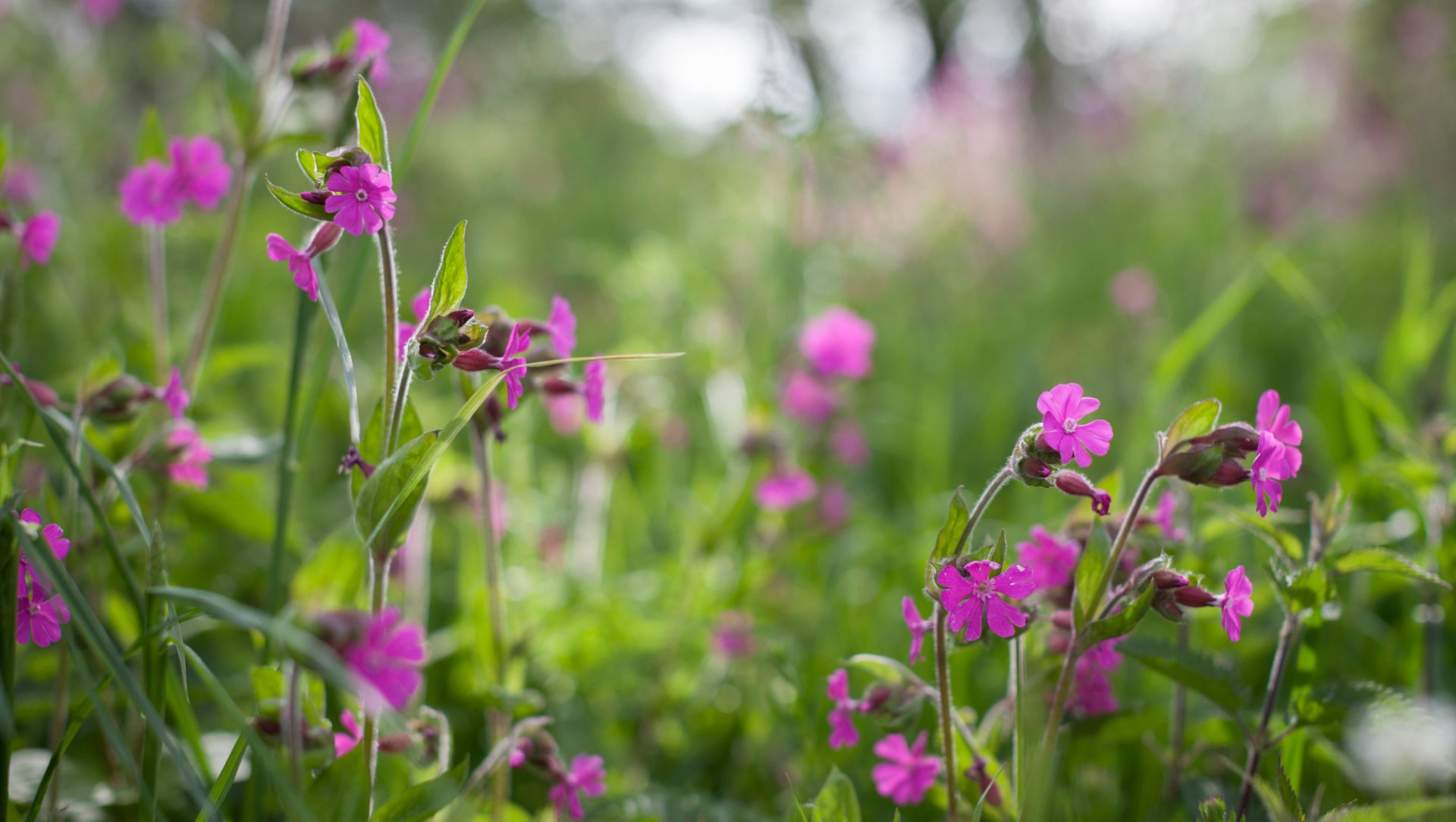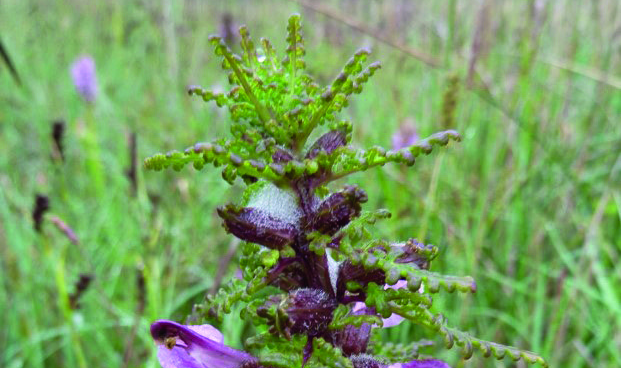WildFlowers - Little Ouse Headwaters Project (LOHP)
An extensive fen restoration project on the Norfolk Suffolk border is seeing big improvements to wildflower numbers.
In just a few short years, the Little Ouse Headwaters Project has turned what was an abandoned tree nursery, into a wetland paradise.
In her first article for WildEast, Conservation Manager Ellie Beach explains the joy of seeing a fen brought back to its former glory.
The Little Ouse Headwaters Project is a volunteer charity, dedicated to the conservation and enjoyment of the wildlife, walks, and landscape of the Little Ouse Vz Little Ouse Valley along the Norfolk/Suffolk border. In 2014 we were lucky enough to purchase New Fen in Thelnetham, next door to another of our sites Parkers Piece, thanks to a grant from the Heritage Lottery Fund (HLF).
In the Beginning
New Fen falls into two sections – drier ground to the west and wetter ground to the east adjacent to Suffolk Wildlife Trust’s Thelnetham Middle Fen. The drier area was farmed until the 1970s when it became a tree nursery. However, the nursery was never managed, and the serried ranks of mainly non-native trees became a tangled mess. The wetter area was historically an open, wet fen managed for peat and fodder – this was covered in 40-year-old willow scrub and a lot of nettles.
Restoration Vision
The vision for the site was to see the drier woodland areas become a mosaic of native trees, scrub, and glades, with the wetter fenland restored to its former glory, as part of the larger fen complex. The HLF funding also included removal of large non-native poplars from the drier part of the site, by contractors, while volunteers tackled the rest of the work.

Scale of the Restoration
Along with our annual workload of managing all our other sites, we had to fit in restoring another fen. This seemed straight forward but necessitated a huge amount of work by the volunteers. In the woodland area we were helped by the contractors removing the large Poplars (Populus alba). This was done sensitively so as not to damage any of the trees we wanted to keep, especially two large Elm (Ulmus procera) trees that were only revealed as we cleared access paths. Selective trees were coppiced. Once the non-native trees had been removed, volunteers replanted the area using appropriate native shrubs and trees to create an open diverse woodland with glades – much more suitable for native wildlife, providing a good wildlife habitat and carbon store for the future.
The wet fen required much more work by volunteers with them undertaking a programme of willow scrub removal over several years, allowing the natural fen flora to re-emerge and recolonise from the neighbouring Thelnetham Middle Fen, which Suffolk Wildlife Trust have been successfully managing for many years.

More volunteers were enticed to help, by the lure of home baked cakes. Each winter we planned the minimum we needed to clear and in which areas to reveal the lost fen and each year we were staggered by how hard the volunteers worked relishing the challenge and getting much more cleared than we had hoped for. When the possibility of a Countryside Stewardship grant came up, which would provide the longer-term management funding we needed – only if we could clear the remaining scrub on the fen area by the end of 2018 - the volunteers took on the challenge. Over 100 days of voluntary work in just three months got the job done!
Looking fen-tastic!
After all the hard work, there was a worry that the nettles that were waiting patiently beneath the scrub would go mad once the trees were removed, but that was not the case. The dormant fen vegetation broke out and low and behold a fen was born. In its first spring as an open fen in about 40 years, the fen speciality plants were already taking hold - Marsh Lousewort (Pedicularis palustris), a strange plant that supresses grass growth where it occurs and lets more delicate fen plants get a look in, was one of the first.
With Marsh Lousewort making a comeback, it was hoped that orchids would not be far behind and low and behold in the first year after restoration (2019) to everyone’s delight, there were six spikes of Southern Marsh Orchid (Dactylorhiza praetermissa) in a small patch of newly cleared fen! In 2020 this had increased to over 30, spread over a larger area and last year (2021) volunteers counted over 300.

Other species that have been recorded include Yellow Rattle (Rhinanthus minor) - another grass-suppressant, Skullcap (Scutellaria galericulata), Ragged Robin (Silene flos-cuculi), Early Marsh Orchid (Dactylorhiza incarnata), Bee Orchid (Ophrys apifera), Pyramidal Orchid (Anacamptis pyramidalis), Yellow Flag Iris (Iris pseudacorus), Purple Loosestrife (Lythrum salicaria), Hemp Agrimony (Eupatorium cannabinum) and still counting.
It is amazing to see the fen flourish, just by removing a few trees and managing the vegetation; no seeds were sown, or plants brought in, just a dormant seed bank awakened. We now have a functioning fen once again, improving every year, with the underlaying peat acting as a vital carbon store.
The Future
It does not stop there. Every year we need to cut and clear the fen vegetation to remove the nutrients and allow the following years’ plants the opportunity to thrive. This takes a lot of volunteer hours to do but now that the fen can be seen to be returning it makes it all worthwhile. Without all our dedicated volunteers, who put their heart and soul into our sites, none of this would be possible and they would not be as abundant in wildlife as they are now.

New Fen is at its best June/July time but can still be flowering and looking amazing well into September, so is well worth a visit. https://www.lohp.org.uk/visit
Celebration
This year, LOHP celebrates its 20th birthday. During the summer we are holding a celebration event ‘Festival on the Fens’ to showcase some of what we have been up to. There will be guided walks visiting New Fen, sheep dog demonstrations, vintage tractors, rural crafts and stalls, refreshments and neighbouring Thelnetham Windmill will also be open for tours. So why not join us to celebrate our achievements on Sunday 3rd July 2022, 11am-4pm, Parkers Piece, Mill Road, Thelnetham, Diss, Suffolk, IP22 1JS
Join Us
We are always looking for more help, if you want to get involved and help us manage the fens or record the flora and fauna then please get in touch. https://www.lohp.org.uk/contact

WildEast Blog

Powered by LocaliQ
Follow Us
SIGN UP FOR NEWS & UPDATES
Newsletter Sign Up
Thank you for signing up to our newsletter.
Please try again later.
Privacy / Terms & Conditions / Sitemap
